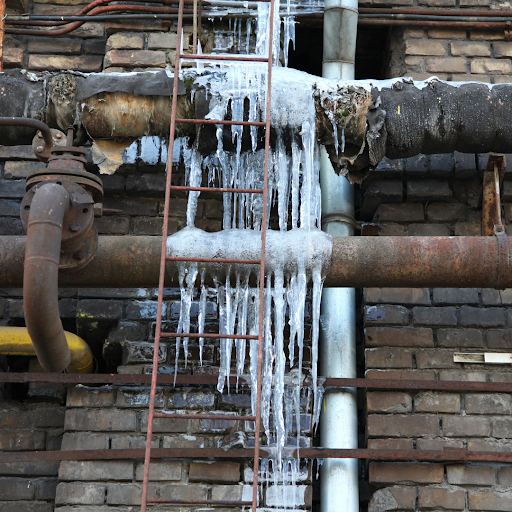This great article which follows pertaining to How To Avoid Freezing Pipes is absolutely compelling. Give it a go and make your own final thoughts.

Winter can wreak havoc on your plumbing, specifically by freezing pipelines. Below's exactly how to prevent it from occurring and what to do if it does.
Introduction
As temperature levels decline, the danger of frozen pipelines rises, potentially resulting in pricey repair services and water damage. Recognizing how to avoid frozen pipelines is critical for property owners in cool environments.
Recognizing Frozen Pipelines
What creates pipelines to ice up?
Pipelines ice up when revealed to temperatures listed below 32 ° F (0 ° C) for prolonged durations. As water inside the pipes ices up, it expands, taxing the pipe wall surfaces and possibly creating them to rupture.
Threats and problems
Frozen pipelines can bring about supply of water disturbances, property damage, and expensive repair services. Ruptured pipelines can flood homes and trigger extensive structural damages.
Indicators of Frozen Water Lines
Determining frozen pipes early can avoid them from breaking.
Exactly how to recognize icy pipes
Try to find reduced water flow from taps, unusual odors or sounds from pipes, and visible frost on revealed pipes.
Avoidance Tips
Protecting vulnerable pipelines
Wrap pipelines in insulation sleeves or use warmth tape to safeguard them from freezing temperature levels. Concentrate on pipes in unheated or outside areas of the home.
Heating strategies
Keep indoor rooms appropriately heated up, specifically areas with pipes. Open up closet doors to allow warm air to distribute around pipelines under sinks.
Shielding Outdoor Plumbing
Garden hoses and outdoor faucets
Disconnect and drain yard pipes prior to winter months. Mount frost-proof faucets or cover exterior taps with insulated caps.
What to Do If Your Pipes Freeze
Immediate actions to take
If you suspect icy pipes, keep faucets open to eliminate stress as the ice melts. Use a hairdryer or towels taken in warm water to thaw pipes slowly.
Long-Term Solutions
Architectural modifications
Consider rerouting pipelines away from outside wall surfaces or unheated areas. Add additional insulation to attic rooms, cellars, and crawl spaces.
Updating insulation
Purchase top notch insulation for pipes, attics, and wall surfaces. Proper insulation aids preserve regular temperatures and lowers the risk of frozen pipelines.
Final thought
Protecting against frozen pipes needs aggressive procedures and fast feedbacks. By understanding the causes, signs, and preventive measures, home owners can shield their pipes throughout winter.
6 Proven Ways to Prevent Frozen Pipes and Protect Your Home
Disconnect and Drain Garden Hoses
Before winter arrives, start by disconnecting your garden hoses and draining any remaining water. Close the shut-off valves that supply outdoor hose bibs and leave the outdoor faucet open to allow any residual water to drain. For extra protection, consider using faucet covers throughout the colder months. It’s also important to drain water from any sprinkler supply lines following the manufacturer’s directions.
Insulate Exposed Pipes
Insulating your pipes is an effective way to prevent freezing. Pipe insulation is readily available at home improvement stores and is relatively inexpensive. Pay close attention to pipes in unheated areas such as the attic, basement, crawl spaces, or garage. Apply foam insulation generously to create a buffer against the cold. You can also wrap your pipes in heat tape or thermostat-controlled heat cables for added warmth.
Seal Air Leaks
Inspect your home for any cracks or openings that could let in cold air. Seal any holes around the piping in interior or exterior walls, as well as the sill plates where your home rests on its foundation. Additionally, make sure to keep your garage door closed unless you’re entering or exiting. Leaving it open creates a significant air leak that can lead to frozen pipes.
Allow Warm Air Circulation
During cold snaps, it’s essential to allow warm air to circulate evenly throughout your home. Leave interior doors ajar to promote better airflow. Open kitchen and bathroom cabinets to help distribute heat consistently around the rooms. If you have small children or pets, be sure to remove any household chemicals or potentially harmful cleaners from open cabinets for safety.
Let Faucets Drip
A small trickle of water can make a big difference in preventing ice formation inside your pipes. When temperatures drop significantly, start a drip of water from all faucets served by exposed pipes. This continuous flow helps prevent the water from freezing. Additionally, running a few faucets slightly can relieve pressure inside the pipes, reducing the chances of a rupture if the water inside does freeze.
https://choateshvac.com/6-proven-ways-to-prevent-frozen-pipes-and-protect-your-home/

We had been shown that write-up about Winter Plumbing Precautions: Preventing Frozen Pipes through an associate on a different website. Do you know about another person who is excited by the topic? Why not promote it. We appreciate reading our article about Winter Plumbing Precautions: Preventing Frozen Pipes.
Apply Now